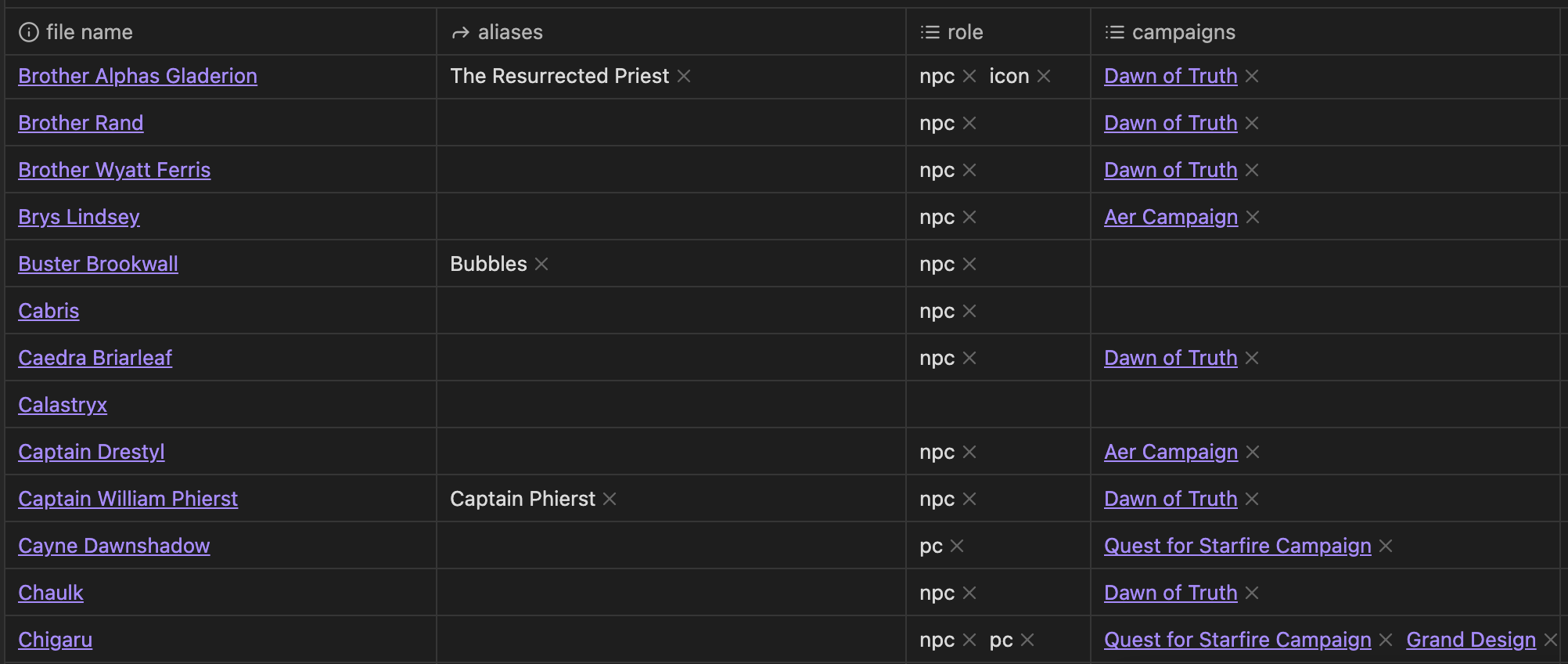My Obsidian Setup for D&D
This is how I organize my Dungeons & Dragons world and campaigns within Obsidian.

Last Updated: 2025 October 11
It’s easy to get started with Obsidian but the organizational possibilities are endless. Let’s take a look “behind the screen” at my setup for Dungeons & Dragons. This is how I organize my world and campaigns within Obsidian.
One Vault to rule them all…
I use a single Obsidian vault. You can make the argument for using a vault for each campaign or world. But I have a number of “shared” notes that I would be referencing in each (rules references, setting details, etc). That’s not easy to do with Obsidian without duplicating notes (something I try to avoid). So I lean into a single vault and organize it to meet my needs.
Dungeons & Dragons “Behind the Screen” Organization
Here’s my main folder structure. Let’s break it down.
main-vault
└───Campaigns
└───Characters
└───Gamemaster Tools
└───Items
└───Locations
└───Lore
└───Organizations
└───Ω External
└───Ω UtilitiesCampaigns
Campaign-specific notes for planning and logging.
To start, I have a folder (and note) for each campaign. Within each, I use files for adventure logs, session notes, and anything else I need to organize for that specific campaign.
Characters
A comprehensive list of characters across campaigns.

Gamemaster Tools
Tools to make my DM life easier.
- Random tables (for NPCs, locations, wild magic, and other stuff)
- Adventure building binder (design advice)
- Homebrew rules
- DM Screen
Items
Magical and non-magical items of interest.
Magic items and mundane items like books. I lean heavily into optional lore via books and scrolls.
Locations
The gazetteer for setting information.
I start with notes for my universal regions. Think “planes of existence.” For my universe, those are the Known World, Elder World, Dark World, Astral Dominion, and Elemental Chaos. I separate out world regions (typically individual settings) into folders. I use folders because I have a lot more notes for an entire setting than I do for the Elemental Chaos.
main-vault
└───Campaigns
└───Characters
└───Gamemaster Tools
└───Items
└───Locations
└───Aer
└───Algoria
└───Dragonmir
└───Eldramir
└───Kandalur
└───Nentir Vale
└───The Fold
└───Xanthomir
│ Astral Dominion.md
│ Dark World.md
│ Elder World.md
│ Elemental Chaos.md
│ The Known World.md
└───Lore
└───Organizations
└───Ω External
└───Ω UtilitiesLore
Universal truths and systems that reach across settings.
This folder contains information on large-scale events, myths and legends, calendar, cosmology, magic, and the divine pantheon.
Organizations
A complete list of organizations from across my setting and campaigns.
That’s a quick overview of how I organize my Obsidian vault for Dungeons & Dragons.
If you want to dive deeper, become a Supporter and download the Architect's Vault.
Game on.
